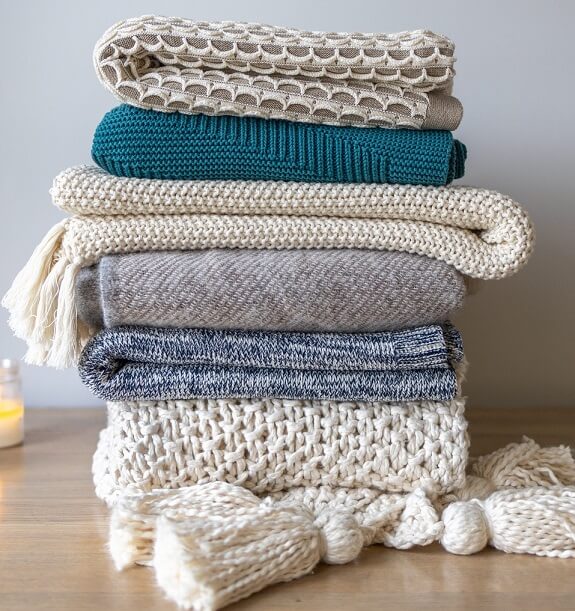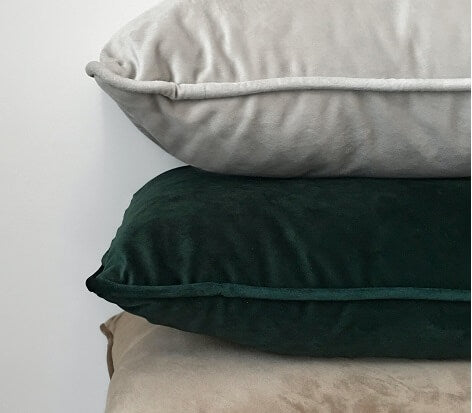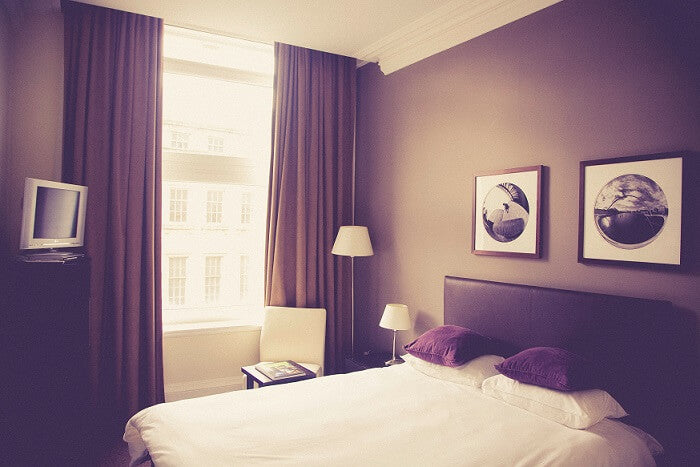Are you constantly waking up with a stuffy nose, watery eyes, and a scratchy throat? If so, you may be one of the many individuals suffering from pillow-related allergies. The Connection Between Allergies and Pillows is often overlooked, but it can have a significant impact on your quality of sleep and overall well-being. In this blog post, we will explore What You Need to Know about how pillows can harbor allergens and what you can do to combat this issue for a sneezing-free slumber.

Understanding How Pillows Become Allergen Havens
While it's easy to overlook your pillow as a source of discomfort, it's vital to understand its role in harboring allergens. Over time, a pillow can collect a surprising amount of dust mites, mold spores, and pet dander. This accumulation isn't due to any inherent flaw in the pillow itself but rather the environment it's subjected to. The combination of body heat and moisture from sweat creates a welcoming haven for these allergens. Each night, as you lay your head down, you're in close contact with these irritants, which can significantly affect your health, particularly if you're allergy-prone. Dust mites, for example, thrive in the warm and humid conditions of a well-used pillow, feeding on the dead skin cells that humans naturally shed. Mold finds a fertile breeding ground in any dampness your pillow might absorb, whether from sweat or ambient moisture. Even if you don't have pets in your bed, pet dander can travel on clothing and air, settling into the fabric of your pillow. This combination of factors makes your pillow an allergen haven, underscoring the importance of proactive maintenance and care to mitigate these risks. Understanding the environmental conditions that contribute to the proliferation of allergens within pillows is the first step in creating a healthier sleeping area.
The Common Allergens Lurking in Your Pillow
Within the confines of your pillow, a microscopic world thrives, often unnoticed until it triggers your allergies. Among the chief culprits for such discomfort are dust mites, which are particularly notorious for their role in allergic reactions. These minuscule creatures feast on the skin cells we shed naturally, multiplying in numbers within the warm and humid environment a pillow typically provides. Their waste products are potent allergens, provoking symptoms in individuals with sensitivities.
Mold represents another significant threat, with its spores finding a fertile breeding ground in any dampness your pillow might retain. Whether it's from perspiration during the night or ambient moisture in your bedroom, mold can proliferate, releasing spores that, when inhaled, may incite allergic responses.
Pet dander, too, finds refuge in the fibers of your pillow, regardless of whether your furry friends share your bed. These microscopic flakes of skin can be transported on clothing and through the air, embedding themselves in your bedding. For pet owners and even visitors to homes with pets, this can be a source of allergic triggers.
Each of these allergens - dust mites, mold, and pet dander - plays a significant role in the ecosystem of your pillow, potentially exacerbating or even causing allergic symptoms for those susceptible. Understanding the presence and influence of these common allergens is crucial in taking steps to mitigate their impact on your health and sleep quality.
Recognizing the Symptoms of Pillow-Related Allergies
Waking up feeling unrefreshed and grappling with a range of discomforting symptoms could point toward a hidden adversary in your bedroom—your pillow. Pillow-related allergies manifest through a variety of signs that shouldn’t be ignored. These include consistent sneezing fits, an itchy or runny nose, and persistent coughing that seems to greet you each morning. Itchy, watery eyes are another common complaint, often accompanied by a sore or scratchy throat that makes you feel as if you’ve caught a cold overnight. Additionally, individuals with more sensitive systems may experience skin irritations or rashes where their face or body has been in prolonged contact with the pillow. Congestion, leading to snoring or difficulty breathing at night, can also disrupt sleep and is a telltale symptom of allergic reactions to the unseen culprits within your bedding. These symptoms can significantly impact your day-to-day life, leading to fatigue and irritability due to poor sleep quality. Recognizing these signs as potential indicators of pillow-related allergies is the first step towards addressing the issue and seeking solutions to mitigate your discomfort. Keeping a symptom diary can be helpful in understanding the relationship between your sleep environment and the allergic reactions you're experiencing, guiding you towards making informed decisions about how to better allergy-proof your sleeping space.

Cleaning and Maintenance Tips to Keep Allergens at Bay
Maintaining a clean sleeping environment is pivotal in reducing the exposure to allergens that can accumulate in your pillows. A key practice is the regular washing of both pillowcases and covers. Doing this weekly in hot water not only eradicates dust mites but also helps to strip away the sweat, oils, and dead skin cells that feed these and other microscopic pests. Beyond the surface, consider washing the pillows themselves, if the care instructions permit, every three to six months to flush out deeply embedded allergens. For those pillows that cannot be washed, vacuuming them with a HEPA filter vacuum cleaner can assist in removing dust mites and pet dander trapped within.
Employing allergen-proof pillow covers is an effective barrier against the penetration of dust mites and other allergens. These specialized covers are designed to be impenetrable by allergens, thus keeping the core of your pillow clean. Additionally, airing out your pillows regularly by placing them in direct sunlight can naturally kill mites and help evaporate moisture that mold and fungi need to grow. It's crucial, however, to avoid introducing excessive moisture into your pillows, so ensure they are completely dry before making the bed.
Following these cleaning and maintenance strategies not only extends the life of your pillows but also contributes to a healthier sleeping environment. Reducing the presence of allergens where you rest can dramatically improve your sleep quality and decrease the likelihood of allergic reactions disrupting your rest.
When to Replace Your Pillow for Allergy Prevention
Despite the best efforts in cleaning and maintaining your pillows to minimize allergen exposure, pillows have a finite lifespan and their ability to protect against allergies diminishes over time. It's important to recognize the signs that your pillow needs replacing to keep your sleep environment healthy. On average, pillows should be updated every one to two years, but for those with allergies, a more frequent replacement may be necessary to ensure optimal protection against allergens. Signs that it's time to consider a new pillow include noticeable lumps, stains, and odors that persist despite washing, as well as any increase in allergic symptoms upon waking. Remember, even with protective covers and regular cleaning, the internal structure of the pillow can still accumulate allergens that are difficult to remove completely. Opting for hypoallergenic pillows made from materials that naturally resist allergens can also be a wise choice when it's time for a replacement. Keep an eye on the condition of your pillows and be proactive in replacing them to maintain a clean, allergen-reduced sleeping space.
Additional Strategies to Allergy-Proof Your Bedroom
Beyond the critical steps of managing and maintaining your pillows, further actions can fortify your bedroom against allergens, enhancing your chances for a sneeze-free rest. Incorporating hypoallergenic bedding into your sleep sanctuary can make a significant difference. These special fabrics are designed to be less hospitable to dust mites and other allergens, creating an additional layer of defense. Materials such as bamboo, silk, or microfiber are not only soft to the touch but also naturally resist allergenic invaders.
An air purifier is another powerful tool in your allergy-proofing arsenal. Devices equipped with HEPA filters can capture up to 99.97% of airborne particles, including pollen, pet dander, and dust mite debris, circulating cleaner air throughout your bedroom. This can be particularly beneficial for those whose allergies extend beyond the confines of their pillows, providing a more comprehensive approach to allergen reduction.
Pets, as much as we love them, can be walking carriers of allergens. Their dander, along with outdoor pollen caught in their fur, can easily infiltrate your bedroom environment. Designating the bedroom as a pet-free zone can drastically reduce your exposure to these allergens. If this isn't feasible, regular grooming and bathing of your pets can help minimize the dander they shed.
Maintaining low humidity levels in your bedroom is also crucial. Dust mites and mold spores thrive in moist environments, so keeping the humidity below 50% can inhibit their growth. A dehumidifier can regulate your room's moisture level, creating less inviting conditions for allergens. Additionally, ensuring your bedding and pillows are thoroughly dry before use can prevent the inadvertent fostering of mold and mildew.
By integrating these strategies, you can complement the efforts made with your pillows, fostering an environment that supports restful, uninterrupted sleep. With each step, you move closer to transforming your bedroom into a haven of allergen-reduced tranquility, setting the stage for healthier, more rejuvenating nights.






